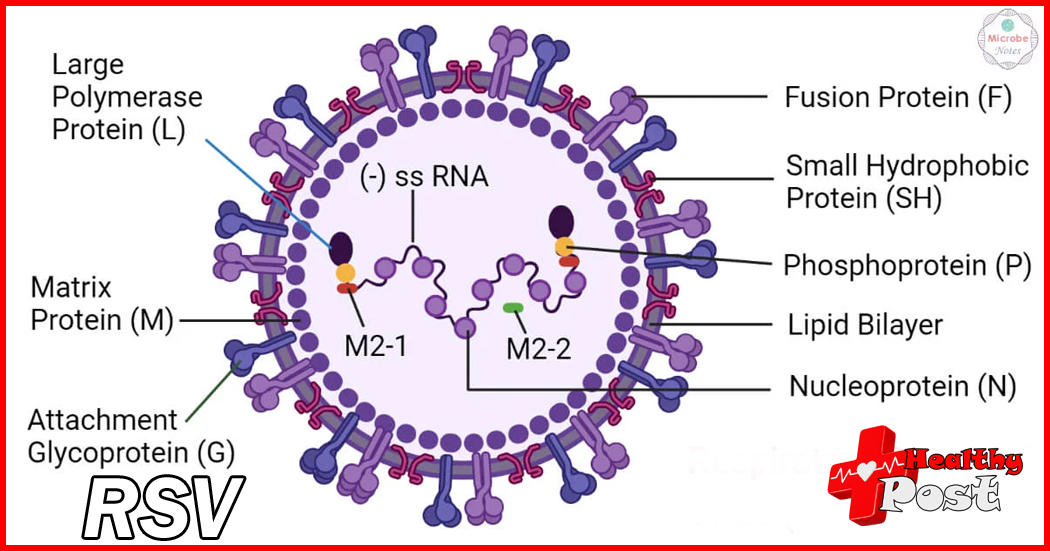
What is RSV? Introduction to Respiratory Syncytial Virus (RSV)
Respiratory Syncytial Virus (RSV) is a common respiratory virus, also known as fusion virus, belonging to the genus Pneumoniae of the family Paramyxoviridae. The size of the virus particle is about 150nm, which is slightly smaller than parainfluenza virus. It is sensitive to ether and has no hemagglutination. It forms a unique syncytium when cultured in human epithelial tissue. The virus proliferates in the cytoplasm, and intracytoplasmic inclusion bodies can be seen. . There is only one serotype of syncytial virus, and recent molecular biology methods have shown that there are two subtypes. RSV infection is the primary cause of viral respiratory tract infections in infants and young children.
It seriously endangers children’s health and most easily affects the respiratory system. Its main mechanisms are airway obstruction, bronchial smooth muscle spasm and subsequent airway hyperresponsiveness. The dominant strain of RSV mutates every year and is prone to repeated infections; it is extremely contagious and is mainly transmitted through contact with virus-containing secretions or pollutants in the nasopharyngeal mucosa or eye mucosa. Direct contact is the most common route of transmission, but droplets and aerosols can also cause transmission. It is not preventable by vaccines.
KMD Bioscience is a company dedicated to providing high-quality biologically active raw materials such as antigens, antibodies, enzymes and substrates, and related technical services. The company has a series of technical platforms for protein recombination, antibody preparation, purification, and diagnostic reagent R&D and production (including immunochromatography, enzyme immunoassay, and chemiluminescence). It also has a group of high-quality in vitro diagnostic upstream and downstream technicians with rich experience. It provides guarantee for the company’s research and development and production of high-quality in vitro diagnostic reagent raw materials and related technologies. Kamed Biotech can provide high-quality and sensitive diagnostic raw materials: respiratory syncytial virus protein and mouse monoclonal antibody
Structure of RSV virus:
RSV is a single negative-strand RNA virus of the genus Pneumovirus in the family Paramyxoviridae. The full genome length is about 15.2kb, encoding 11 proteins; the RSV genome size is about 15-16kb, encoding 11 proteins, including 8 structural proteins and 3 non-structural proteins (NS1, NS2 and M2-2). The structural proteins include 3 transmembrane surface proteins (G, F, SH), 2 matrix proteins (M and M2-1), and 3 nucleocapsid proteins (L, N, and P) [1, 2].
The G protein mediates the binding of the virus to the host cell, and the F protein mediates the fusion of the virus and the host cell membrane, allowing the virus to enter the cell. Both are essential for virus replication, and both contain B cell and T cell epitopes, which are stimulators. The body produces the most important viral antigen proteins for humoral and cellular immunity. The G protein is highly variable, and the corresponding cell receptor is not clear. It is closely related to the antigenic epitope determinants and viral gene diversity. The G protein plays an important role in distinguishing RSV A and B subtypes based on antigenicity.

RSV infection mechanism
It is an enveloped virus that infects human airways. Its pathogenesis is complex and involves host immune response, pathogens and environmental factors. It is most likely to affect the respiratory system. Its main mechanisms are airway obstruction, bronchial smooth muscle spasm and subsequent airway obstruction. High reactivity. Mainly targets ciliated bronchial epithelial cells. An intracellular receptor called nucleolin (NCL) plays a role in allowing RSV to enter cells. RSV binds itself to the receptor and enters the cell. RSV binds to insulin-like growth factor 1 (IGF1R) and protein kinase C zeta (PKCζ), using both to generate a signal, or “doorbell,” that summons nucleolin to the cell surface where the virus is located. Once nucleolin reaches its “designated” location (the doorway), RSV binds to it, enters and infects the cell.
Products and advantages:
KMD Bioscience’s current diagnostic active raw materials involve infectious diseases, tumors, inflammation, thyroid function, hormones and other directions. Our company can provide a variety of bioactive raw materials and technical services for IVD, and widely serves related reagent manufacturers at home and abroad. Including but not limited to customized development of antigens and antibodies, antigen-antibody labeling and coupling, antibody pairing screening and production purification, immunochromatography, enzyme immunoassay and chemiluminescence system optimization and process debugging and other technologies.

